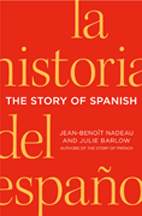 July 30, 2012 is the 520th anniversary of the Edict of Expulsion of the Jews from Spain. This tragic event was a pivotal moment in the history of Spanish.
July 30, 2012 is the 520th anniversary of the Edict of Expulsion of the Jews from Spain. This tragic event was a pivotal moment in the history of Spanish.
Centuries earlier, Jewish scholars had played an important role in the evolution of Spanish. They populated the court of Castilian King Alfonso X, El Sabio (1221-1284).
In Alfonso’s time, only ancient languages were considered worthy for teaching and writing. Alfonso decided to change all that by translating classic Latin, Greek, Hebrew and Arabic texts into vernacular Castilian.
Jewish scholars were the best translators of these languages in his Kingdom, so he welcomed them to his court.
Yet, their scholarly accomplishments never spared Jews from persecution in Spain. Alfonso X himself forced the Jews in his court to wear yellow stars. In June 1391, 50 000 Spanish Jews were killed during a huge wave of massacres.
A century later, in 1478, Spain’s Catholic Monarchs, Isabela and Fernando had launched the Spanish Inquisition, but Jews were not their original target. The country was fighting a costly war against the Muslims in Granada and needed tax revenues from prosperous Jewish merchants, tradesmen, scholars and financiers to finance it.
Everything changed when the Catholic Monarchs finally conquered Granada in 1492. With no war to finance, the Monarch decided to expel Jews from Spain. They gave them exactly four months to leave the country or to convert. Within a matter of months, some 100 000 – possibly as many as 800 000 – Spanish Jews fled Spain.
The Expulsion of the Jews had an immediate and dramatic effect on the Spanish language. The massive exodus created large colonies of Spanish-speaking “Sephardic” Jews from Istanbul to Manchester, and from Morocco to Sarajevo – the term Sephardic comes from the Hebrew Sefara, for Spain.
Dozens of Spanish-speaking Sephardic communities took root in the Ottoman Empire, the Balkans and Northern Europe. Spain’s Jews went to Turkey, North Africa, Italy, the Netherlands, France and the Balkans. The single largest contingent went to Portugal – 23 000 by some estimates.
For generations, even centuries, Spanish Jews maintained their language, which was called either Judeo-Spanish, Judezmo, Judio, Sefardi, Spanyol, Spagnol, Spañol, Haketia, or Ladino, depending on where they lived. Ladino became so common in the Ottoman Empire that people mused that, “Castilians spoke the Jewish language.” Though Ladino was almost wiped out during the Holocaust, it is still spoken today, notably in Bulgaria.
And many Sephardic Jews rose to great prominence throughout history, including British Prime Minister Benjamin Disraeli, Italian painter Amadeo Modigliani, and French philosopher Jacques Derrida.
The complete story of how the language of Castile evolved into modern Spanish will be available in our new book, The Story of Spanish, to be released April 2013 (St. Martin’s Press).











